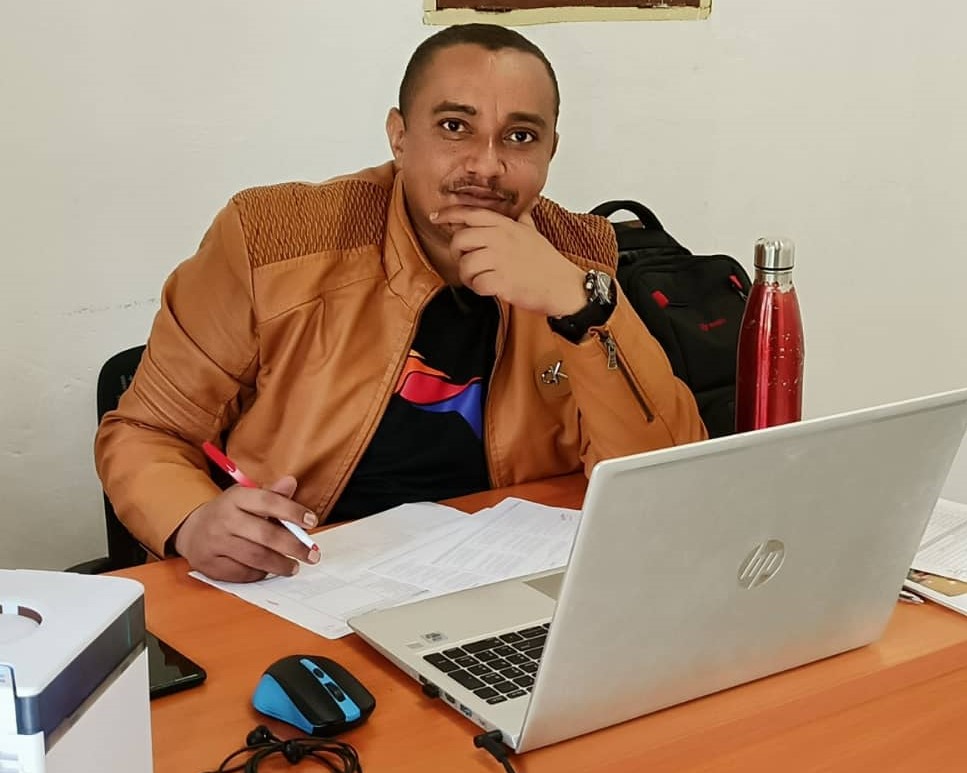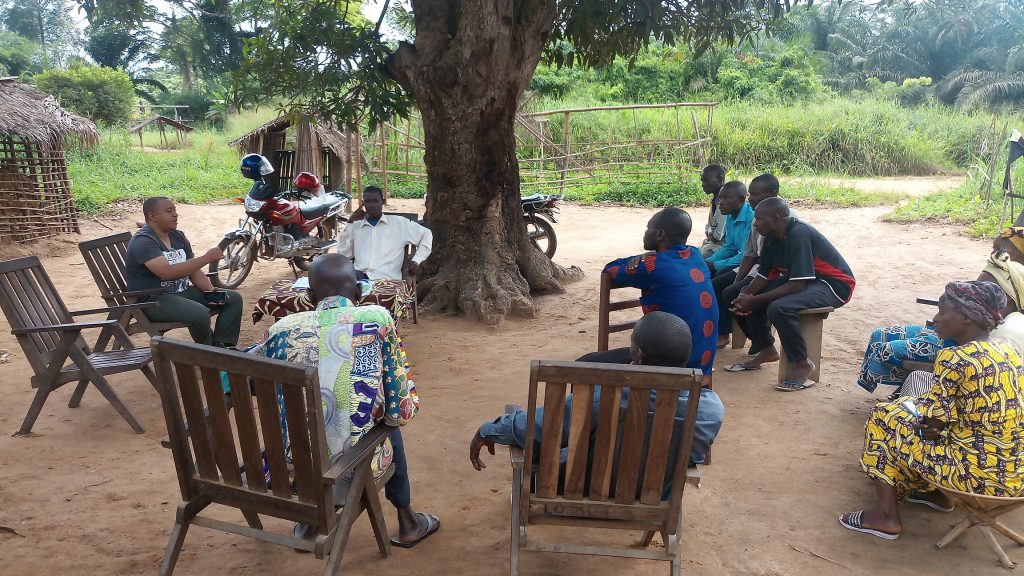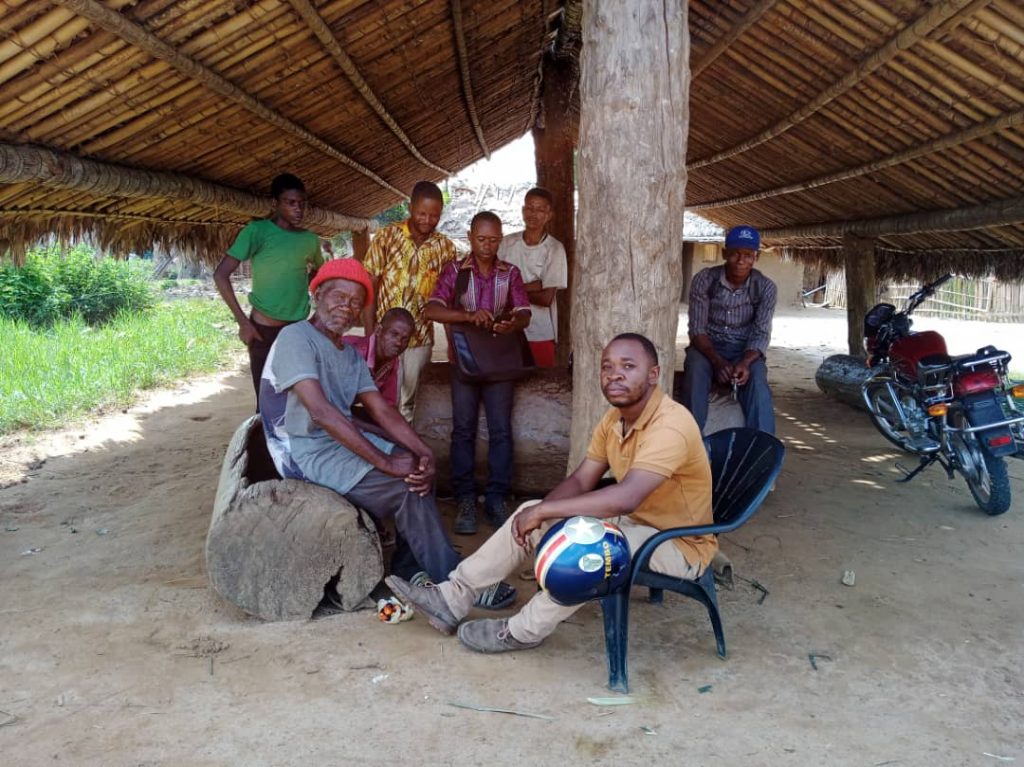
Noah Herland tells us about the Agricultural Producers' Organizations (APO) established by Plantations et Huileries du Congo (PHC) as part of its Community Development Program (CDP). Noah is an Agro-Economist Engineer specialized in Environmental and Development Economics. He has acquired 12 years of technical expertise in several areas relating to Environmental Valuation, Socio-Economic Capacity Strengthening, Policymaking, Peace Building, and Sustainable Development through a professional career with several institutions such as local and international NGOs, government institutions, and the private sector. He joined PHC in 2021 as a Community Development Expert.
Describe to us, in simple terms, what an APO is.
An Agricultural Producers' Organization, or APO, is a basic unit for the intervention of the Community Development Program (CDP) which brings together several community members who have agreed to pool efforts in agricultural production within the framework of PHC's Sustainable Development Strategy.
What is the function of APOs within the framework of the Community Development Program?
APOs are part of the strategic axes on which the Community Development Program intervenes. APOs are inspired by community organization models initiated in the past by multi-stakeholder programs that understood the importance of pooling effort and resources as a way to guarantee results (ex : the PRAPO Program in Eastern Province). In designing our program, it was a question of not reinventing the wheel by creating new intervention approaches without taking into account the models that had already been successfully implemented in the environment where we work.
The function of the APOs within the framework of the CDP is therefore to provide a foundation on which PHC's support to communities will be oriented, particularly the technical, financial and logistical support necessary to achieve the vision of Shared Prosperity as defined by the company. This foundation is also key to building and strengthening capacities through a diversity of activities.
What is the process for creating an APO?
There are steps to follow to set up an APO. They include, among other things, meetings with the local authorities who give us the approval to work with the members of their community. Meetings are also organized with members of the community during which we present the CDP and seek their support. The rest is of an administrative nature, such as formalization, drafting the statutes and internal regulations of the APOs, and accrediting them with administrative authorities.

How many APOs have been established to date? What are their activities?
To date, we have 63 APOs in Lokutu and Yaligimba with whom we work and an average of 780 members who are identified in our registers. Some APOs are already operational, and others are to be revitalized―that is to say those with whom we need to relaunch activities. There are also APOs whose establishment is requested by communities themselves; they say they are inspired by the organizations that we have launched in other villages. Concerning the APOs' activities, they are made up of five of the eight axes of the CDP, namely activities related to palm tree and cocoa cultivation (Axis 1), corn cultivation (Axis 2), market gardening (Axis 3 ), animal farming activities like pigsties and chicken coops (Axis 4) and fish farming (Axis 5).
What were the challenges in creating the current APOs?
We have encountered many challenges, in particular with the communities who expressed reservations about the CDP that was launched by PHC's new management. This is because the social clauses signed in 2018 with the former management team were not respected, and there were fewer benefits and limited impact on the communities. PHC's new management, however, is committed to carrying out the Environmental and Social Action Plan (ESAP: the environmental and social action plan) from which certain objectives and expected results of the CDP originate. PHC now implements its ESAP commitments in parallel with the CDP, which helped to strengthen social action.
We also noticed the enthusiasm and eagerness of some community members who wanted to work with us right away and quickly launch agricultural production, but the deployment of this type of program requires significant logistical resources, particularly for purchasing materials and seeds as well as delivering them to the sites. The other challenge is that when the program was launched in 2021, the CDP operated with only one dedicated staff member and did not have its own equipment. We have always counted on the support of colleagues in the department ESG (Environment, Social and Governance) to introduce us to the communities and use the department's logistical equipment like motorbikes to get to our field activities.
At present, a recruitment process to strengthen the staff dedicated to the CDP is underway at our three sites in Lokutu (Tshopo province), Yaligimba (Mongala province) and Boteka (Equateur province). Procurement procedures for goods and services have also been launched. With the involvement of the Executive Management, we are certain of the effective implementation of the CDP.
What are the main successes so far?
The main success to date is APOs members' acceptance and ownership of the process and their demonstrated willingness to get involved in the program and produce. We also received testimonies from communities who were satisfied with the seeds distributed. The work undertaken under this program is bearing fruit: we launched corn production in March 2022, and the next harvest is scheduled for July 2022.
It should be noted that corn production is the subject of a pilot project aimed at introducing new, more profitable seeds as a gradual replacement for degraded seeds. This pilot was a response to the demands of local producers who complained that the drop in prices of purchase offers by buyers in end markets was due to the poor quality of the grain that came from their fields. Thus, the CDP was able to acquire 2500 kg of yellow maize seeds to cover a trial of around 100 ha in APO communities. As such, we will have numbers for harvest averages until August; after bagging and preparation for sale, we can assess in more detail the profitability of these new seeds for APOs.
What's next for the CDP?
The future of the CDP lies in the execution of PHC's Community Development Strategy, which is defined over 5 years. As APOs are the basic unit of intervention for the CDP, all the activities defined within the framework will cover five years.


